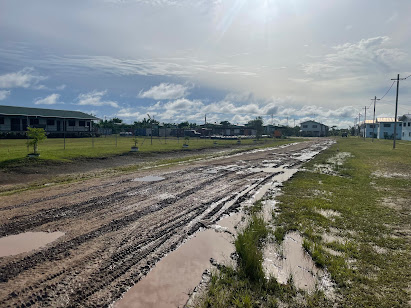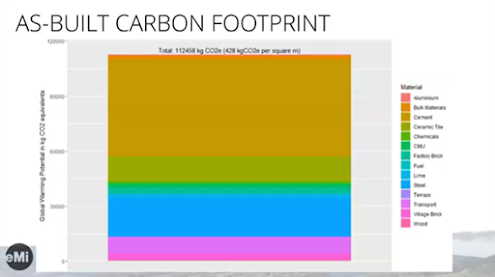Dear friends,
Thank you for taking the time to open up this blog. And welcome to any new readers. Below, I will share a little bit about our project work at the Balimo Hub in Papua New Guinea. Most villages (hubs) are very rural and are not accessible by roads; only by small aircrafts like the MAF aircraft shown below:
And of course, viewing a large site is sometimes easier from the airplane:
During our February 2025 project trip, we visited (3) villages/hubs: Daru, Balimo, and Morehead to help plan for the restoration of land. This is restoration of the environmental destruction of land due to mining disasters. Our client, The Sustainable Development Program (SDP) is a multifaceted development program established in 2001 to improve the welfare of the people of PNG, particularly those of Western Province. Balimo is a beautiful area of PNG, but remote and is prone to flood during rainy season:
Our primary focus was at the Balimo Hub where we help master plan how this site can used as the future educational precinct of PNG.
Above is a functional program of all the stakeholders at Balimo which we put together as the EMI team prior to our site visit.
During the site visit, the functional program is tested out in a land use diagram to the client graphically understand the aspirations of an architectural masterplan. This is typically developed by hand while ion site:
And then refined as more of a land use plan, digitally as shown below:
For (3) months after the project trip, there is design work to be completed back at the EMI office in Cambodia. Buildings and other structures are sized according to the amount of people they are meant to serve and then placed on a site plan in a way to show use, circulation (pedestrian and vehicular) as well as the separation of public and private spaces:

In addition to making this site an educational precinct, some of the key goals of the masterplan is to raise the livability of the current residents. To do this, more public parks and public gathering spaces are recommended:
Above is an example of what pocket parks could potentially look like.
Below is a computer-generated image of one option for a main
entry of the College Campus:
While there are approximately 700 people at the Balimo site currently, this number is expected to grow to more than 1300 in the next 3-5 years as Balimo grows to be more of an educational hub.
Another goal is to try and have this site served by solar power 24 hours a day, 7 days a week. Due to the remoteness of the site, the client currently spends over $40 k a month on diesel fuel to power (2) generators which generate electricity for the site, and of course if they do not transition to solar, this monthly diesel cost will double in the next 3-5 years:
Solar power available 24 hours a day, 7 days a week not only saves on fuel costs, but with less reliance on generators, it also reduces the amount of carbon dioxide released into the atmosphere. This is one of the environmental sustainability goals we at EMI are helping to promote for all our clients as part of our "Creation Care" initiatives at EMI for 2025.
Another goal for Creation Care is to try to use more sustainable building materials. From the as-built study below from our EMI Uganda office, you can see that concrete and aluminum release some of the most carbon dioxide into the environment, while wood and village brick release the least:
PNG is a beautiful country, and we would all love to see the restoration of this land in the coming years!












No comments:
Post a Comment